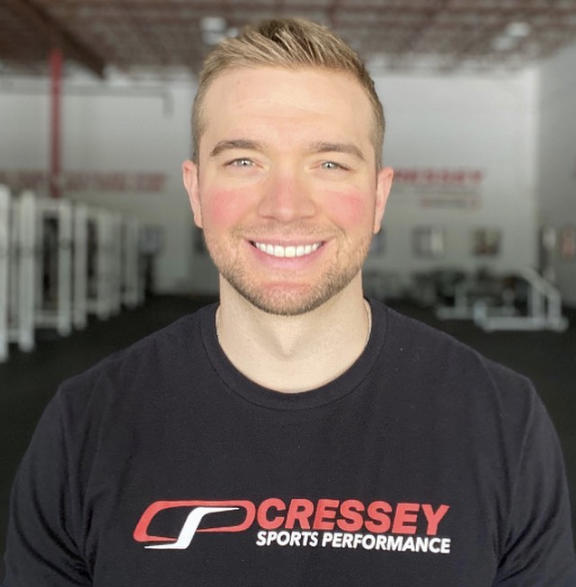
Progression Strategies for Back Hip Loading
Today’s guest post comes from Cressey Sports Performance – Massachusetts pitching coordinator, Jordan Kraus.
Skill coaches are often faced with the challenging task of addressing mechanical problems that are actually underlying movement inefficiencies. This is especially true with respect to different aspects of the pitching delivery, and today I will be discussing the back hip load. We place a lot of emphasis on mastering this initial move in the delivery because of the many of downstream effects it has. Simply put, if the first move in the sequence is poor, the subsequent moves won’t be very good, either.
The biggest challenge stems from the fact that pitching is a unique skill, and the movement patterns associated with it become very ingrained. It is very difficult to change these patterns within the confines of the mound and baseball in hand, so stepping away from the specialized task of throwing to create context for a new movement pattern can expedite the process.
Efficiently loading the back hip can be challenging because of the different planes of motion involved and the speed associated with a pitching delivery. The three movements we look for in the back hip are flexion, adduction and internal rotation. It’s important to note that not everyone’s load will be the same, but all will have varying degrees of each of these movements.
The following movements can be used to help facilitate positions we want to replicate on the mound. For simplicity, they are broken down into four categories: unloaded, loaded, dynamic, and skill-specific. Within each of the first three categories, the movements progress from sagittal, frontal, to transverse plane movements. The goal of the sagittal plane movements is to control hip flexion while shifting weight posteriorly. Next, we are progressing by shifting our weight posteriorly while moving laterally in the frontal plane. The third movement in each category combines all three planes of motion as we learn to control flexion, adduction and internal rotation. The final category is a medicine ball series that will help bridge the gap between movements in the weight room and the throwing motion.
1. Unloaded: RDL/1-leg RDL > Lateral Lunge > Bowler Squat
2. Loaded: KB RDL/1-leg KB RDL > KB Lateral Lunge > Rotational Landmine Press/Rotational Row
3. Dynamic: Drop Squat 2:1 > Low Box Shuffle w/Stick > Lateral Lunge w/ Fake Medicine Ball Chop
4. Skill-Specific: Rear Foot Elevated Medicine Ball Shotput > Step-Back Medicine Ball Shotput > Knee-to-Knee Medicine Ball Shotput
It’s important to note that there are plenty of other movement options and the progressions for these are not linear. Additional load or increased speed of a movement can sometimes produce a more favorable outcome, so there will always be a level of coaching required for exercise selection. Selection will depend on a variety of factors, including strength, athleticism, mobility restrictions, and individual compensation strategies. Once these movements become proficient, the next step would be to blend the new loading strategy into plyo drills, catch play, and ultimately to the mound. Changing the task can drastically improve motor learning, so don’t be afraid to have pitchers step away from the mound to create better movement patterns.
On a semi-related note, we recently opened up registration for our 2022 Collegiate Elite Baseball Development Summer program at Cressey Sports Performance in Hudson, MA. This is a great developmental opportunity for pitchers who are open to taking the summer off from competitive baseball, but still want to keep throwing and improving. Space is limited, so don’t delay in reaching out if you’re interested. For more information, click here.
About the Author
Jordan Kraus serves as a Pitching Coordinator at Cressey Sports Performance-MA. You can follow him on twitter and Instagram at @_JordanKraus_, or email him at JordanRKraus@gmail.com.



